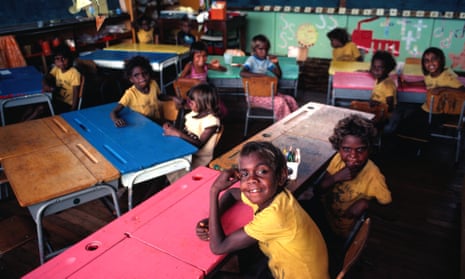A coalition of peak Indigenous organisations is preparing to pressure state and federal governments for a greater share of Closing the Gap funding following the release of the 2019 report card, which found only two of the seven targets were on track.
The group is hoping to sign an agreement with the Council of Australian Governments by the end of February outlining a tripartite agreement to update the targets, four of which have expired.
The historic deal was struck in December and will ensure control over and responsibility for the targets is shared between Indigenous people, the federal government and state and territory governments.
The prime minister, Scott Morrison, is expected to promote the new arrangement in his first Closing the Gap update in parliament on Thursday, which will also highlight progress made against key areas like life expectancy, employment and child mortality, despite those targets not being on track.
In comments taken from a draft of his speech, Morrison said the Closing the Gap targets, established in 2008, were “well intentioned but ‘top down’ so it was always doomed to fail in both its ambitions and also its process”.
“It didn’t genuinely bring on board states and territories in making sure they have accountabilities and sharing the objective and process with Indigenous Australians,” he said.
Morrison said the existing targets took a “deficit mentality … which can sometimes mask progress being made”.
“The progress may not be fast enough or far enough but it still can discourage further efforts because of that approach so we do always need to mark what’s been accomplished,” he said.
The report card found that the year 12 attainment rate was on track to halve by 2025 and rates of early childhood education had already reached their 2025 goal, with 95% of Indigenous four-year-olds attending early childhood education in 2017.
Child mortality rates continued to decline but that target to halve the gap was no longer on track due to an even more rapid decrease of non-Indigenous child mortality rates.
Progress have been made in improving literacy and numeracy rates, employment rates and life expectancy rates, but not enough to meet the target. School attendance rates will be confirmed mid-year but on current data are unchanged since 2014.
Pat Turner, the chief executive of the National Aboriginal Community Controlled Health Organisation, told Guardian Australia before the report’s release that she expected Australia would “fail again to meet the targets” due to a lack of targeted resources.
“We would like a lot of the money to go directly to Aboriginal community organisations to implement some of the policies because we know they will be more effective,” she said.
She said the tripartite partnership with Coag was “a game-changer” and set “a real precedent here for how governments should be working with Aboriginal people”.
“Business as usual is not going to work out,” she said.
Turner said the focus for the new targets would be on “meaningful jobs, meaningful education and being healthy to do those things in the first place”.
Rod Little, the co-chair of the National Congress of Australia’s First Peoples, said that for progress to be made governments had to commit to working with Indigenous people.
The draft targets, released in December, include reducing the overrepresentation of Indigenous children in out-of-home care, reducing rates of domestic violence against Aboriginal women and children, reducing Indigenous overrepresentation in youth and adult incarceration rates, and reducing rates of overcrowded housing.
They also include a plan to develop a target on access to land, water and cultural rights; positive targets on education, employment and tertiary education; and reframing numeracy and literacy targets to focus on getting a greater number of Indigenous students in the top two bands.
Coag has proposed that the existing targets on early childhood education, year 12 attainment and life expectancy be maintained.
